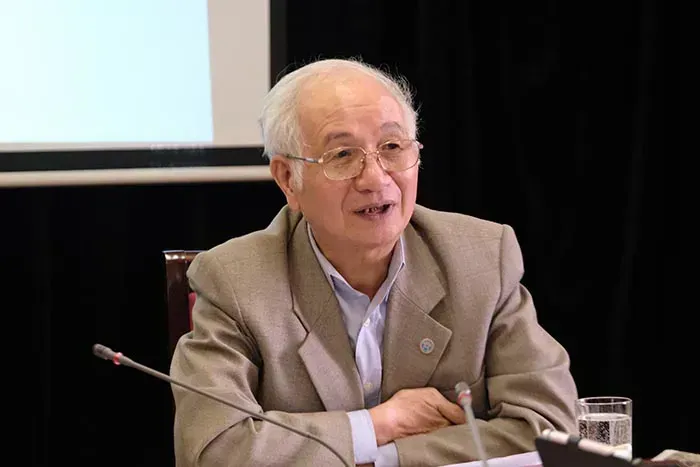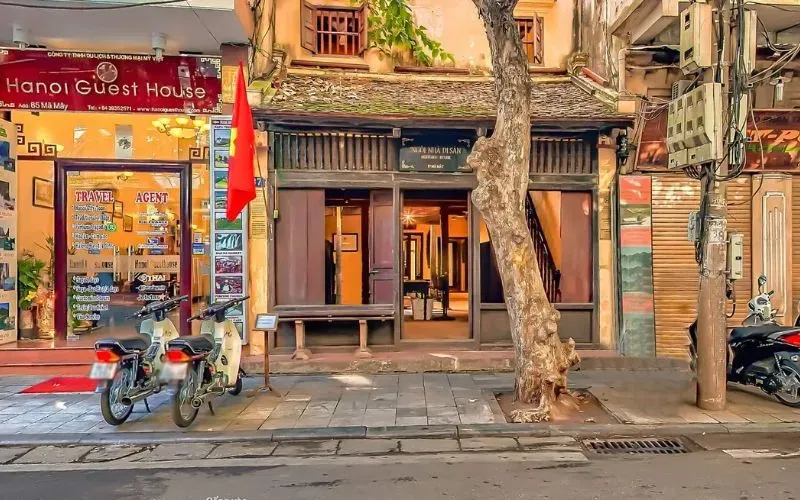Strong public participation to drive Hanoi’s sustainable and dynamic urban growth
Hanoi’s development depends on effective planning, mobilization of social resources and clear decentralization with accountability and transparency.
When the entire political system joins hands and citizens take the lead in preservation and development, the vision of a civilized, modern and culturally-rich Hanoi becomes clearer than ever. The 18th Congress of the Hanoi Party Committee for the 2025–2030 term is moment of hope for a sustainable, dynamic and livable city.
Dr. Architect Dao Ngoc Nghiem, Vice Chairman of the Vietnam Urban Planning and Development Association, speaks with Kinh te & Do thi (Economic & Urban) Newspaper about his expectations for Hanoi’s next stage of urban planning and management.

Dr. Architect Dao Ngoc Nghiem, Vice Chairman of the Vietnam Urban Planning and Development Association. Photos: Kinh te & Do thi Newspaper
How about Hanoi’s achievements in urban development and management during the 17th term (2020–2025)?
The 17th term marked an important foundation for Hanoi’s urban planning and development. After the Capital Master Plan was approved, the city focused on implementing numerous sub-plans for districts, communes and detailed zoning to cover the entire capital area.
At the same time, Hanoi carried out the Master Plan for Hanoi's Development from 2021 to 2030 with a vision to 2050 and the General Adjustment of the Master Plan for Hanoi's Development to 2045 with a vision to 2065. These two strategic plans complemented each other, providing comprehensive and flexible tools for urban management.
Hanoi is now the only locality nationwide where 100% of communes meet the new-style rural standards, with about 40% reaching advanced levels and many becoming exemplary rural models. This balance between urban and rural growth demonstrates the city’s efforts to ensure harmony during urbanization.
The city has also made progress in technical infrastructure, particularly public transport. The growing share of public transit has eased pressure on road traffic and improved residents’ quality of life, helping address long-standing urban bottlenecks.

An old apartment building closed for renovation.
What are the biggest challenges for Hanoi’s urban planning and development in the 18th term?
The city must prepare and adjust hundreds of detailed plans to match new management realities. This is an enormous workload, especially after the recent administrative reorganization that reduced the number of communes and wards from 526 to 126. Each new unit now has a much larger population and area, requiring tailored development orientations.
Another major challenge is accelerating the pace of urbanization. To raise Hanoi’s urbanization rate to 65%–70% during 2025–2030 from the current 55%, the city needs flexible policies and synchronized planning to ensure rapid, orderly, and sustainable growth.
The suspension of the “city within the capital” model and the removal of the “special urban area” concept require Hanoi to redefine its spatial structure. The city needs a unique management approach that complies with national laws while reflecting its role as the country’s political and administrative center.
Infrastructure, especially transport, remains a bottleneck that requires urgent attention. Hanoi should accelerate the construction of ring roads, bridges over the Red River and urban rail lines to strengthen east–west connections, improve regional links and boost socioeconomic growth.

The ancient house at Ma May Street, Hanoi.
The two-tier urban government model, which will take effect on July 1, 2025, also introduces new governance demands. Communes and wards will take on 80%–90% of district-level management duties, yet their capacity and staffing remain limited. The city must quickly consolidate its administrative system and improve the competence of grassroots officials.
How do you view the city’s focus on urban renovation, renewal and reconstruction as a key task for the new term?
This is one of the most demanding and complex tasks. Hanoi currently has nearly 1,600 old apartment buildings and hundreds of valuable villas, houses and heritage structures. Many are severely degraded, but renovation has been slow due to inadequate policies and mechanisms. The city must balance new development and heritage preservation as this is the hallmark of a thousand-year-old capital.
Under the amended Capital Law, citizens play a central role. They can propose renovation and reconstruction projects, while the government provides direction and support. For the policy to take effect, there must be clear guidelines and incentive mechanisms in credit, taxation and administrative procedures.
Take old apartment renovation as an example. Although policies have been in place since 1992, progress remains limited due to insufficient compensation and resettlement mechanisms, leading to disagreements among authorities, investors, and residents. To resolve this, Hanoi needs flexible compensation ratios, low-interest loans, and adequate temporary housing arrangements.
For the preservation of the Old Quarter and old neighborhoods, Hanoi needs a specific strategy that turns preservation into a driver of growth rather than an obstacle. The city’s urban heritage is rich, but conservation efforts are inconsistent. The city should issue clear guidelines to help property owners access financial and technical support for restoration while preserving traditional materials. In places like Hoi An or Beijing, when residents receive support, they take the initiative to preserve their heritage.

An urban area located to the west of Hanoi.
What key factors will determine Hanoi’s sustainable development in the coming term?
There are three decisive factors, namely, planning, social resources and decentralization. The first one, planning must truly serve as the guiding framework for all development activities. The city must mobilize social resources, especially its intellectual community, experts and architects who make up nearly 70% of the country’s intellectual workforce. And there must be clear decentralization and delegation of authority, accompanied by accountability and transparent oversight.
With the foundation built in the 17th term and the strategic directions outlined in its General Development Plan to 2045 and vision to 2065, Hanoi now stands at a great turning point. Urban planning, development and management reflect not only professional competence but also the city’s governance capacity and long-term vision.
When the political system, businesses and citizens work together, Hanoi can truly become a model of a modern, sustainable and culturally rich metropolis. If managed well, the city will have the strength and resources to make a breakthrough from 2025–2030 and beyond, toward 2045–2065.
Thank you for your time!








